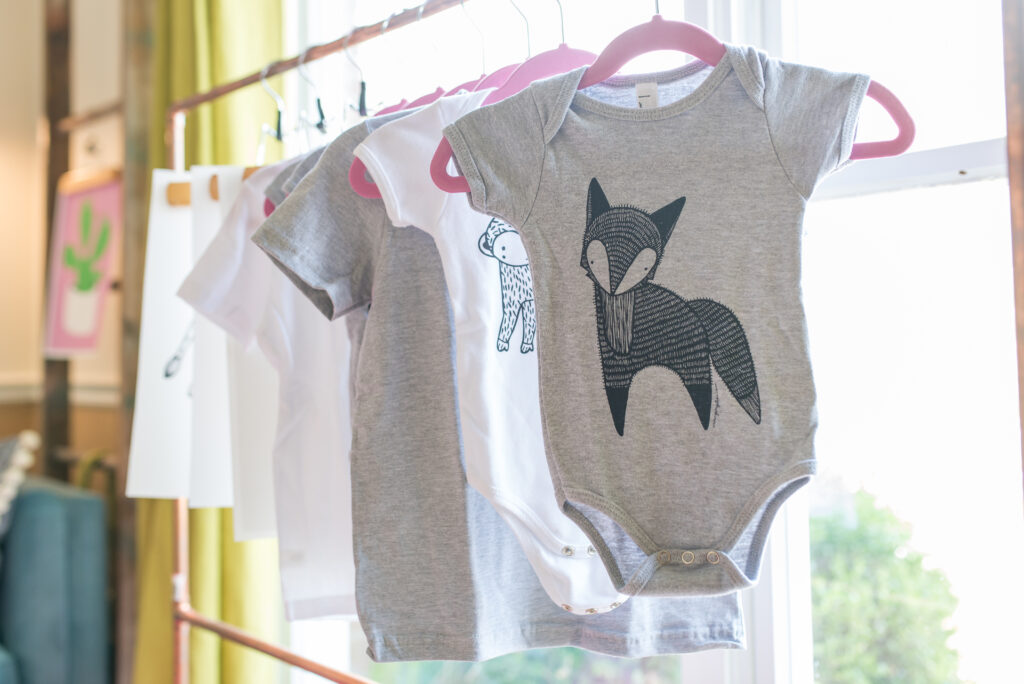This website uses cookies so that we can provide you with the best user experience possible. Cookie information is stored in your browser and performs functions such as recognising you when you return to our website and helping our team to understand which sections of the website you find most interesting and useful.
Hey, friend!
I'm Stacie Bloomfield
I am the owner and illustrator of Gingiber. I have been an illustrator for 15+ years and have successfully sold my artwork across several categories such as art licensing, wholesale, direct to customer sales, direct downloads, books, teaching, and more. I cannot wait to teach you how to do the same!
Categories
Whether you’re already a professional artist or you’re at the very first step of your creative career, you probably wonder how long you’ll be able to keep it as your full time job. A lot of artists’ passion isn’t in the business world, and they wonder if they’ll be able to pull off owning a successful business long term.
It’s totally normal to worry about the instability of an art career, especially as you start to rely on the income, but learning from others who have achieved your goals can give you a sense of peace. If you didn’t go to business school and you need some practical advice on how to find financial success as an artist, I’m here to help!
Today I’m sharing some business strategies that creative entrepreneurs of all types can use to build a successful art business that goes the distance.

How to Become (And Stay) a Successful Artist
1. Build Your Portfolio: Finding your signature style is absolutely essential for making it in the art world. (If you’re not sure about your signature style, check out my blog post about it. You don’t want to skip this step!) Once you’re clear on your identity as an artist, you need to compile your body of work into a portfolio. This is the foundation you’ll build everything upon.
2. Diversify Income Streams: The next step is leveraging multiple income streams to support your business. This can include art licensing, print on demand, commissioned work, selling handmade items at craft shows, and more. Diversifying helps mitigate the risk of relying on a single source of income. Make sure to only add one stream of income at a time. Each one takes time, patience, and hard work to build and develop. Rushing to start multiple streams at once can lead to burnout and inefficiency in your creative process.
3. Leverage Art Licensing: Start pitching your work for licensing deals. Adapt your pitches to different clients and gain confidence in the process. Continuous learning and adaptation are key to staying relevant and successful. That being said, art licensing is a long-term game that can take months to start generating income. While you’re waiting for licensing deals to pay off, it’s important to continue to build your brand and leverage your art across other income streams.
4. Take Action: Avoid the trap of continuously learning about how to run your own art business without implementing what you’ve learned. While education is important, you have to put your new knowledge into practice for it to make a difference.
5. Maintain Copyrights: Keeping the copyright to your art is crucial. It will allow you to use the same artwork across different products and platforms, meaning you won’t have to spend as much time to make more money.
6. Build Systems: Creating, learning, and mastering your own systems that make each each income stream simple and buildable is essential. It ensures that each stream is sustainable and profitable in the long run.
7. Stay Focused and Motivated: Any artistic endeavor requires some elbow grease to truly succeed. The only way to make sure that your efforts pay off is to stay consistent with them over time. Find ways to remind yourself of your goals, make good decisions about time management, and stay motivated.
I have helped hundreds of artists grow their small businesses, and I can confidently say that following these guidelines will make a huge difference in your life and business. With the right mindset and a lot of hard work, you can create a career that fulfills you and brings you joy.
If you’re looking for personalized help in boosting your business plan, my course Leverage Your Art is for you! Stop Googling how to make it happen, and let’s start turning your dreams into reality.
